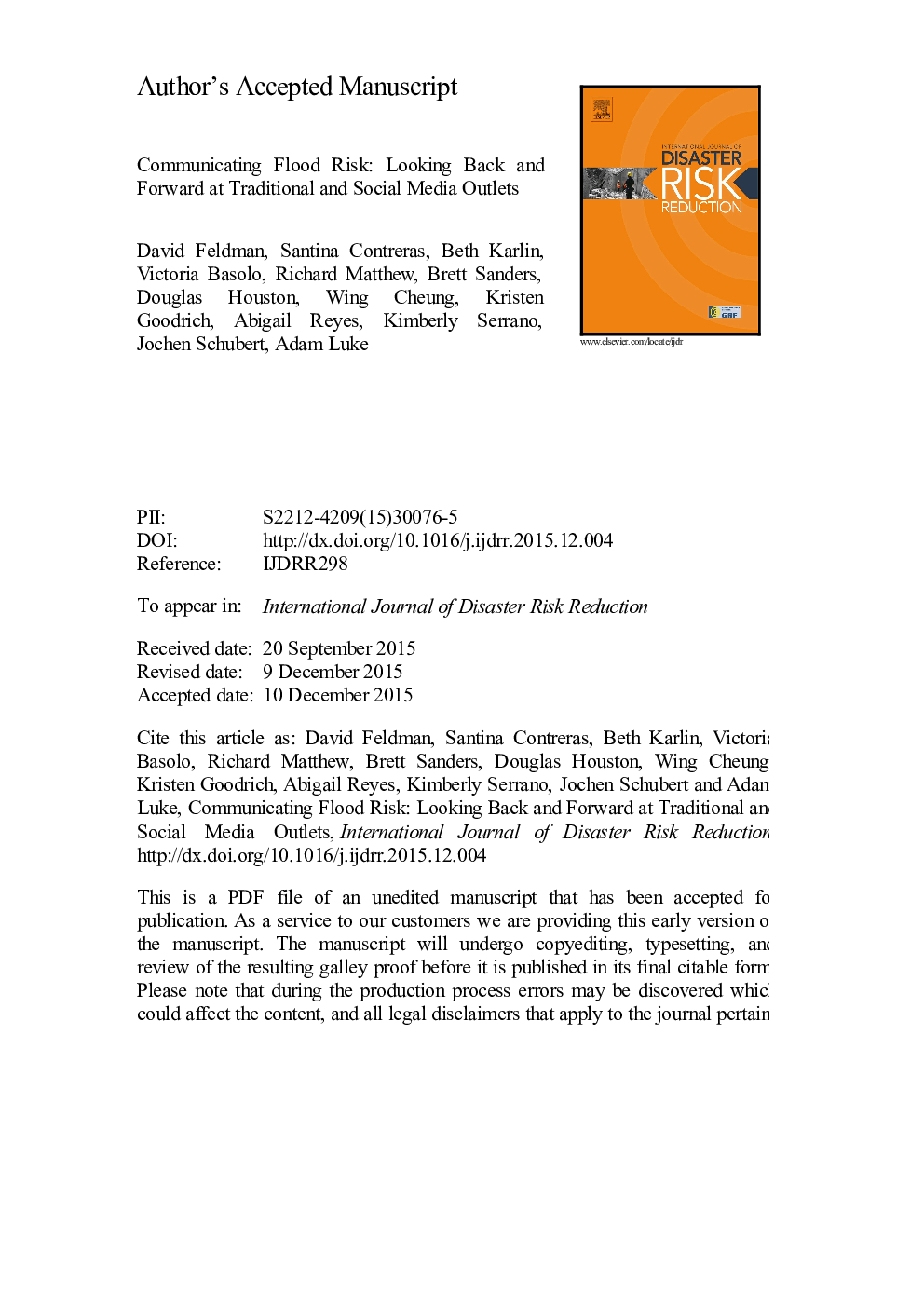| Article ID | Journal | Published Year | Pages | File Type |
|---|---|---|---|---|
| 7472782 | International Journal of Disaster Risk Reduction | 2016 | 26 Pages |
Abstract
The communication of information about natural hazard risks to the public is a difficult task for decision makers. Research suggests that newer forms of technology present useful options for building disaster resilience. However, how effectively these newer forms of media can be used to inform populations of the potential hazard risks in their community remains unclear. This research uses primary data from an in-person survey of 164 residents of Newport Beach, California during the spring of 2014 to ascertain the current and preferred mechanisms through which individuals receive information on flood risks in their community. Factor analysis of survey data identified two predominant routes of dissemination for risk information: older traditional media and newer social media sources. A logistic regression model was specified to identify predictors for choosing a particular communication route. This analysis revealed that age is the central factor in predicting the sources people use to receive risk information. We follow the analysis by discussing this finding and its policy implications.
Related Topics
Physical Sciences and Engineering
Earth and Planetary Sciences
Geophysics
Authors
David Feldman, Santina Contreras, Beth Karlin, Victoria Basolo, Richard Matthew, Brett Sanders, Douglas Houston, Wing Cheung, Kristen Goodrich, Abigail Reyes, Kimberly Serrano, Jochen Schubert, Adam Luke,
